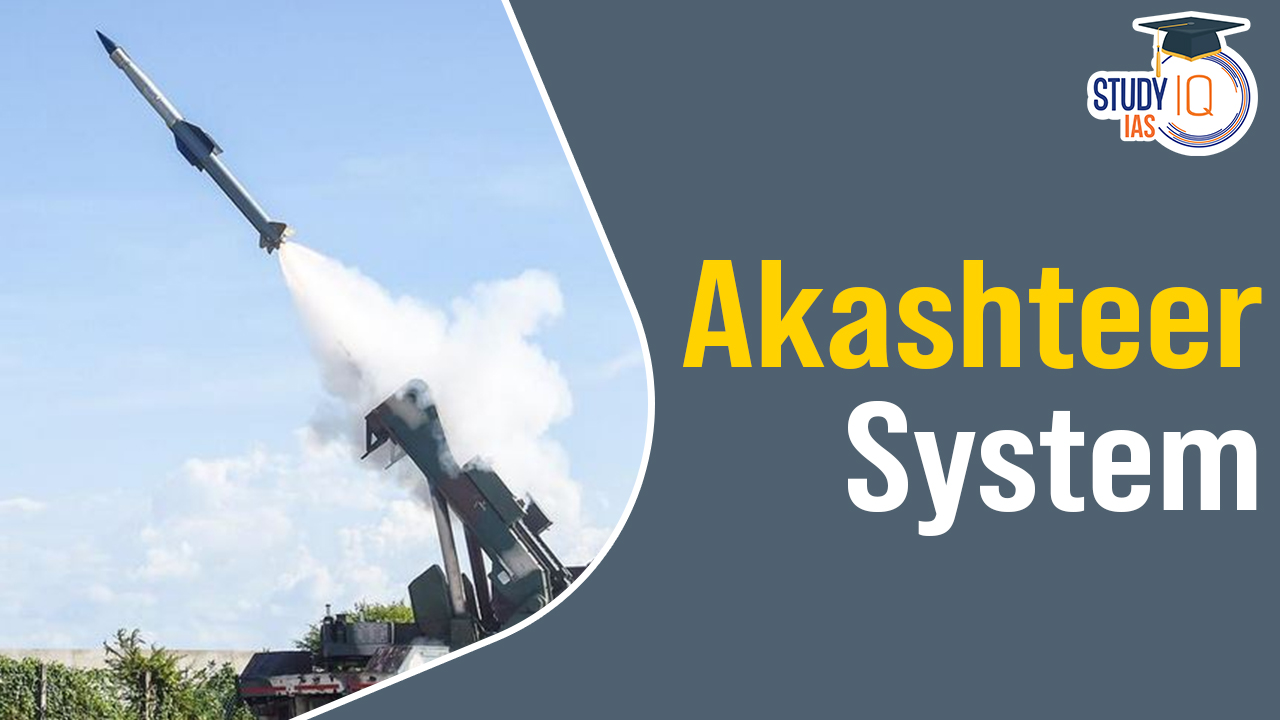Table of Contents
India’s native Akashteer Air Defence System, produced by Bharat Electronics Limited (BEL), has become a game-changer in national security. As India’s version of Israel’s Iron Dome, the Akashteer system highlights the nation’s increasing capability in creating sophisticated, automated air defence systems that are capable of eliminating multiple aerial threats with precision and speed.
About Akashteer System: India’s Iron Dome
Akashteer is a state-of-the-art Air Defence Control and Reporting System (ADCRS) created for the Indian Army. It forms the backbone of India’s integrated air defence network by automating detection, tracking, and engagement of enemy aircraft, drones, and missiles in real-time.
Developed by Bharat Electronics Limited (BEL) under the ‘Atmanirbhar Bharat’ initiative, Akashteer enables seamless coordination between the Indian Army’s Air Defence units and the Indian Air Force, ensuring a robust and responsive shield across the country’s airspace.
| About Akashteer Air Defence System | |
| Developed by | Bharat Electronics Limited (BEL) |
| Deployment | The first batch of control centres flagged off from BEL Ghaziabad |
| Purpose |
|
Purpose of Akashteer Air Defence System
-
Automation of Air Defence Operations: Replaces manual processes with digital, real-time command and control mechanisms.
-
Real-Time Threat Response: Enables instant identification and engagement of hostile aerial threats.
-
Integration of Multiple Sensors: Fuses data from a wide range of radars and sensors from the Army and the Air Force.
-
Empowered Field Units: Decentralised engagement authority to frontline commanders for rapid action.
-
Multi-Layered Defence: Supports coordinated systems like Akash SAM and S-400 Sudarshan Chakra deployment.
Features of the Akashteer System
| Feature | Description | Benefits |
|---|---|---|
| Comprehensive Sensor Fusion | Akashteer integrates a variety of sensors, including 3D Tactical Control Radars, Low-Level Light Weight Radars (LLLRs), and Akash Surface-to-Air Missile Systems. | – Provides a unified, real-time air picture from top command level to tactical units.- Enhances situational awareness and coordination across military branches. |
| Automation and Speed | The system operates with full automation, eliminating manual data entry and delays. | – Instant response to high-speed threats such as supersonic jets and cruise missiles.- Ensures timely threat interception and reduced reaction time, vital for air defence success. |
| Decentralised Engagement Authority | Local commanders are empowered to make real-time decisions regarding threat engagement, without waiting for top-level clearance. | – Enables rapid decision-making and swift interception of threats.- Reduces the risk of delays and damage, especially in high-conflict zones such as Jammu & Kashmir or Arunachal Pradesh. |
| Advanced Air Picture Display | Consolidates real-time data to create a multi-dimensional, live airspace overview. | – Facilitates strategic planning, tactical execution, and dynamic threat assessment.- Provides an accurate, comprehensive view of the airspace for better operational control. |
| Built-In Redundancy and Scalability | Equipped with backup communication systems and upgradeable hardware/software. | – Ensures continuous operation even in adverse conditions like network jamming or failure.- Future-proof design that allows for easy updates to adapt to evolving technological needs. |
| Flexible Deployment | Supports both mobile systems for rapid strike formations and static systems for hardened bases and border areas. | – Offers versatility in deployment across varied operational scenarios.- Ensures defence adaptability in diverse terrains and strategic locations, such as India’s Northern, Eastern, and Western Commands. |
Akashteer Air Defence System in Action: Operation Sindoor & Pakistan’s Missile Strike
In May 2025, after India launched Operation Sindoor to destroy terrorist infrastructure, Pakistan retaliated by firing missiles at 15 Indian locations, including Srinagar, Jammu, Amritsar, and Chandigarh.
India activated the Akashteer system along with S-400 Sudarshan Chakra, intercepting and neutralising most incoming threats within seconds, marking the system’s first full-scale wartime deployment, and proving its strategic value.
Benefits of Akashteer System
- Enhance operational efficiency and integration of air defence mechanisms.
- Provide unprecedented situational awareness and control.
- Enable swift engagement of hostile targets.
- Reduce the risk of fratricide.
- Ensure the safety of friendly aircraft.
- Maintain operational capabilities even in challenging communication environments.
- Facilitate complete automation of air defence operations
Significance of Akashteer System
The Akashteer system was recently inducted by the Indian Army, marking a significant step towards modernised air defence. There are various significances of the Akashteer System:
- A major milestone for the Indian Army’s transformation.
- Meets current and future needs of complex air defence operations.
- Contributes to the “Year of Technology Absorption” initiative.
- Supports the Atma Nirbhar Bharat (self-reliance) drive.


 Securities Markets Code Bill 2025: Towar...
Securities Markets Code Bill 2025: Towar...
 Weakly Interacting Massive Particles (WI...
Weakly Interacting Massive Particles (WI...
 India–Oman Trade Deal: CEPA Signed to ...
India–Oman Trade Deal: CEPA Signed to ...

























